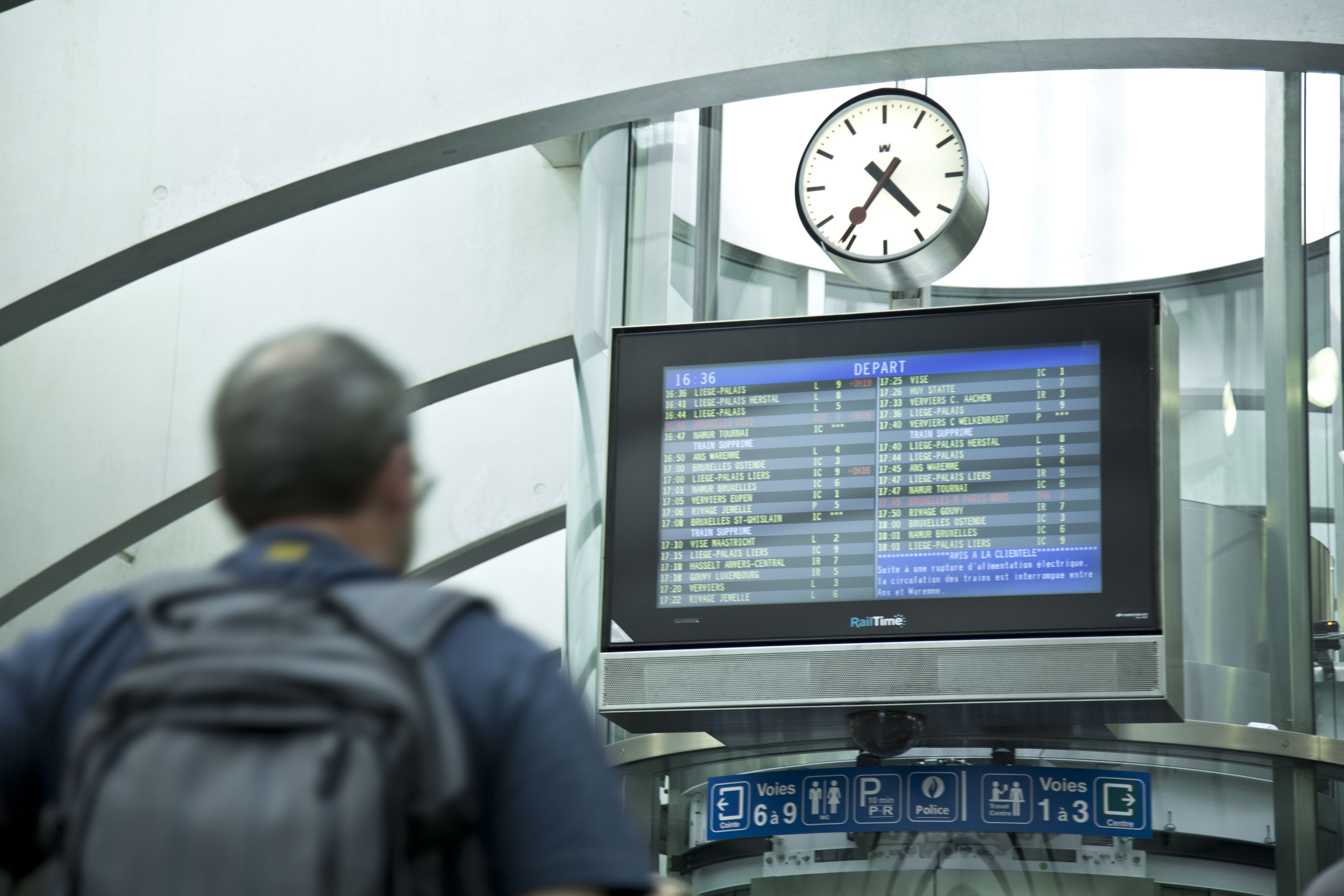Open Data
All our punctuality statistics are available on our Open Data platform. Here you can consult the monthly dashboard and access the 25 datasets related to the punctuality of passenger and freight trains on the Infrabel network.
A yearly summary table on punctuality is also available on our Open Data platform.

How do we measure punctuality?
We register every delay that occurs on the Belgian rail network with the associated causes. But how exactly do we measure and calculate punctuality?
We record the punctuality of domestic traffic in the final station and – if the train rides through the Brussels North-South connection – in the first station of the North-South connection on their route. For a train from Ostend to Eupen that means readings in Brussels-South and in Eupen. As soon as a train is delayed by six minutes or more, we regard it as “not on time.” In other words: the general punctuality figure represents the percentage of trains that were less than six minutes late at their final destination. And – whenever applicable – in the first station of the North-South connection on their route.
We also measure punctuality according to these two parameters:
- The number of passengers on board the trains: for example, the delay of a full train during rush hour carries more weight than that of a partially full train during off-peak hours.
- The punctuality during the entire train journey. This measurement is done at 95 strategic measurement points on the network. Was a train delayed along the way? This parameter also takes this into account, even if the train succeeds in eliminating that delay and arriving on time at its destination. So a train from Ostend to Eupen is also logged in Bruges, Ghent, Leuven and so on.
Neutralization of punctuality
As a government-owned company, we have a management contract with the federal government. According to that agreement we also release another punctuality figure. One that doesn’t take into account delays due to external factors, such as vandalism and major investment works (such as the RER). Such delays are beyond our control and will not be penalized.
This neutralized punctuality figure is a kind of tool with which we and the operators can draw up our own balance sheet. Do you want to get a global picture of the general punctuality, regardless of the causes? Then be sure to view the punctuality figure without neutralization.
Who is responsible for delays?
As an independent infrastructure manager and manager of train traffic, we assign the causes of delays to various parties: Infrabel itself, a railway company or third parties.
Does a party not agree to take responsibility for a delay? Then we call in our neutral mediation service.
We also list all canceled trains. This category includes trains that have not left or that only partly covered their itinerary. And of course we always state the reason for the cancelation. Finally, every month we pour all our detailed punctuality figures and statistics into a report for all rail operators.
